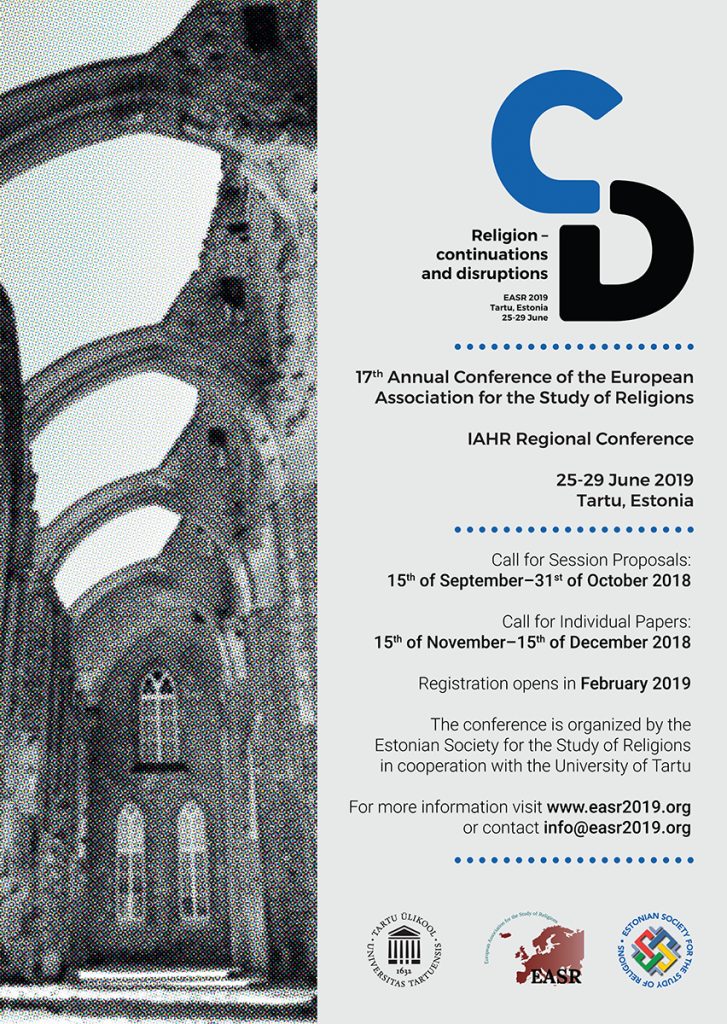At the 17th conference of the European Association for the Study of Religions (EASR)
The PI, Jenny Ponzo, is participating in the 17th annual conference of the European Association for the Study of Religions (EASR), which will take place in Tartu, Estonia, from June 25 to 29.
Her talk, which will take place on June 27 within the panel “Reconfiguring Concepts and Methods for the Semiotic Understanding of Religious Change II: Applications of Semiotic Methodologies” (chaired by Naomi Janowitz), is entitled: NeMoSanctI – A semiotic study of sanctity: the Bibliotheca Sanctorum. Here you can find the abstract.
NeMoSanctI is the research project (funded by the European Research Council, g.a. no. 757314) that studies how Catholic saints have been offered as models of life perfection to hundreds of thousands of people worldwide and how the modelization of sanctity has changed in the 20th century, especially after the Second Vatican Council (1962-1965). NeMoSanctI’s analysis focuses on a wide corpus of texts including norms issued by the Church to regulate canonization procedures and the criteria for defining sainthood, acts of causes for canonization, hagiographies, and literary texts featuring saints as characters. Semiotics constitutes the methodological framework of the project, in that it allows to analyze in a coherent and fruitful manner texts belonging to different genres and to approach sanctity as a model of life perfection mediated through a plurality of channels and by different subjects. The application of semiotics to the study of sanctity thus integrates the scholarship by now developed in the fields of semiotics of religion, of law, and of literature. NeMoSanctI’s approach is characterized in particular by a focus on axiological and narrative structures underlying the texts composing the corpus. As a case study, I will present a semiotic analysis of the Bibliotheca Sanctorum, the first volume of which was published in 1961. The Bibliotheca constitutes the first hagiographic collection deliberately organized as an encyclopaedia, thus contrasting with traditional hagiographic collections, mostly organized on a calendar basis. I will both show how the structural organization of the Bibliotheca responds to the innovative values proposed by the Second Vatican Council and analyse a sample of life stories included in the Bibliotheca to outline some recurring models which are representative of the 20th-century conceptualization of canonized sanctity.


